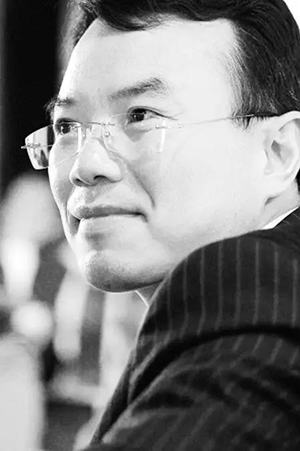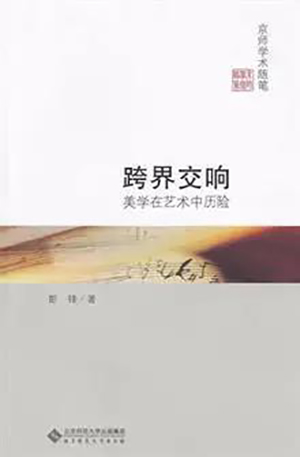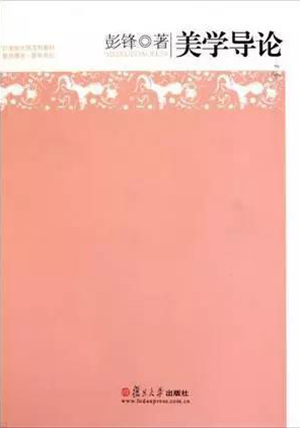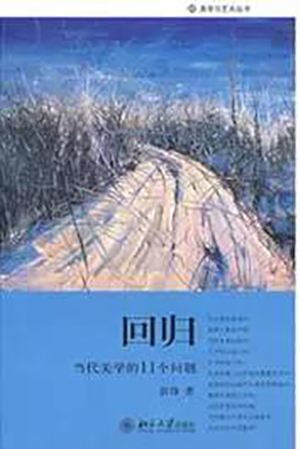
Peng Feng
Doctor of Aesthetics. Professor at the School of Arts of Peking University. Doctoral Advisor. Vice Dean of the School of Arts of Peking University. Vice Chairman of the Research Centre for Aesthetics and Aesthetic Education of Peking University, a key research institute of Humanities and Social Sciences approved by the Ministry of Education. Secretary General of the Advisory Committee on the Teaching of the Theory of Art in China under the Ministry of Education. Standing Council Member of the Chinese Society for Aesthetics. Executive Committee Member of the International Association of Aesthetics. Representative for China of the International Association of Aesthetics. Member of the Exhibit Design Committee of China Artists Association. Fields of research, teaching and practice cover aesthetics, art theory, art criticism, exhibition planning, and playwriting.

Crossover Collaboration: Adventure
of Aesthetics in the World of Art
Beijing Normal University Publishing Group,2015

the Volume 8 of the History of Chinese Aesthetics
Jiangsu People's Publishing House,2014

Programme: Pavilion of the P.R. of China
at the Biennale Arte 2011
People's Fine Arts Publishing House,2012

Introduction to Aesthetics
Fudan University Press,2011

Return of Beauty: 11 Issues
of Contemporary Aesthetics
Peking University Press,2009

Pervasion:the China Pavilion of the 54th
International Art Exhibition of the Venice Biennale
Venice Italy,2010
Artists involved: Cai Zhisong, Liang Yuanwei, Pan Gongkai, Yang Maoyuan, Yuan Gong
Curating ideology:
Unlike western aesthetics which uses light to define beauty, Chinese aesthetics uses taste to define beauty. “Fat sheep is always yummy” is a basic ideology used by Chinese aesthetics to define the beauty. Actually, the taste used by Chinese aesthetics is just the extension of light used by western aesthetics.

the Traveling Exhibition of Contemporary Art of China
covering Beijing, and St. Pittsburgh, 2015
Artists involved: Cai Jing, Ding Fang, Fan Bo, Feng Fang, Gu Liming, He Datian, Huang Yan, Shi Jin, Liu Gang, Liu Jun, Luo Mingjun, Mou Boyan, Ma Lu, Meng Luding, Peng Hui, Peng Si, Shi Lan, Sun Lijun, Su Xinping, Tan Ping, Tian Xiaolei, Wang Honghai, Wang Huaxiang, Wang Rui, Wang Yigang, Xie Xiaoze, Zhang Fangbai, Zou Xiaozhen
Organizers: BFA (Beijing Film Academy) Contemporary Art Research Institute (prepare), Peking University Aesthetics and Aesthetic Education Research Center, Astley Gallery, Galleri Astley Museum and Socang Gallery.
Curating ideology:
“Wind (Feng in Chinese)” is a unique concept in Chinese culture, which does not only mean the natural phenomenon but also the moral quality and aesthetic characteristic. In the Book of Songs, national styles of 15 countries include not only the moral culture but also the aesthetic culture. This is also the reason why people consider The Book of Songs as a literature but not a textbook for morality. After Han and Wei Dynasty, the aesthetic culture existed in “wind” began to get more and more outstanding. In other phrases, “Feng Shen” (a wind god), “Feng Yun” (charm), “Feng Liu” (romantic), “Feng Gu” (strength of character) and “Feng Cai” (style) etc, “Feng” is a kind of aesthetic characteristics, which is different from elegance and nobleness. In western aesthetics, it seems impossible to find something able to have the same scope of “Feng”.

Red Lantern,2013
Scriptwriter
Reedited by Wives and Concubines by Su Tong
Flat D, 13 Floor , Sing Teck Factory Building, 44 Wong Chuk Hang Road, Hong Kong
00852 27965068
00852 27965068
info@icaalliance.org